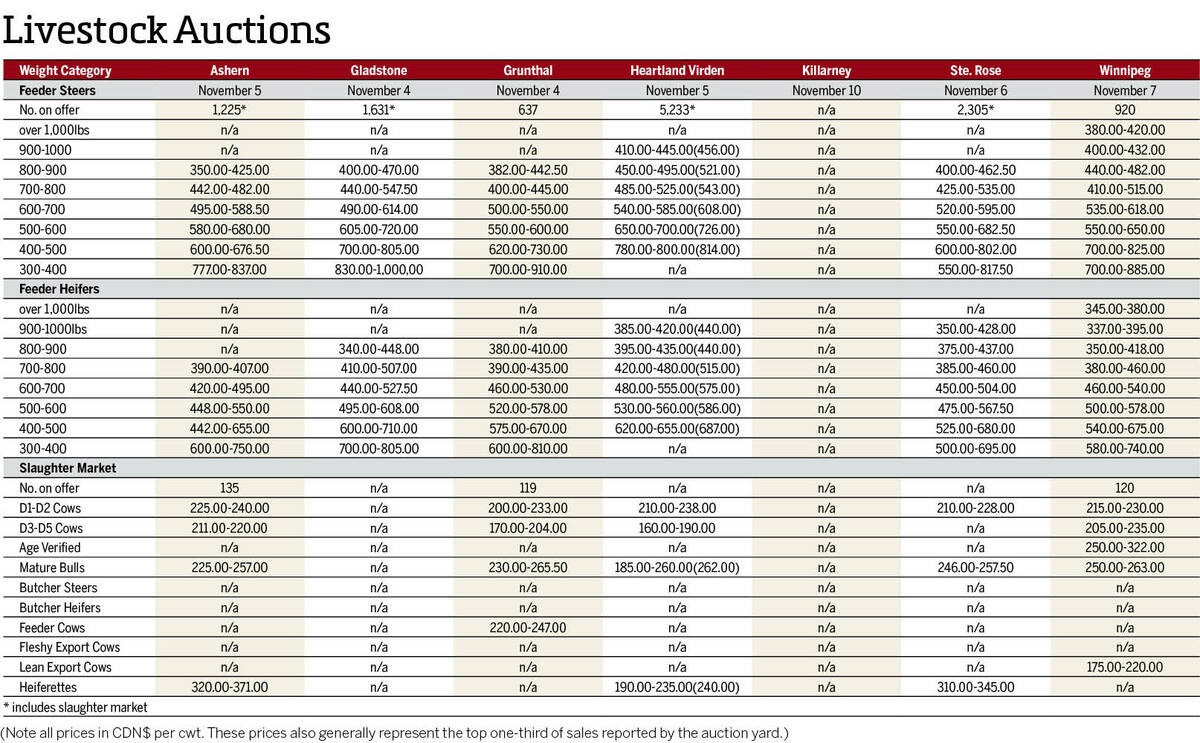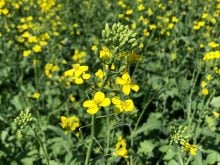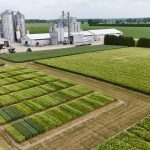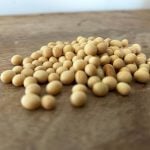Russia’s invasion of Ukraine added fuel to the raging fire of the agricultural markets during the week ended Feb. 25, with any typical supply/demand fundamentals that would usually provide direction taking a back seat to the developing crisis.
Ukraine and Russia are both major players in the world wheat market, and the United States wheat futures saw some of the biggest price moves during the week. Wheat contracts rallied sharply in the lead up to the invasion and in the immediate aftermath, setting fresh highs in many cases. However, profit-taking came forward on Feb. 25 and values were well off their highs by the end of that week.
Read Also

Manitoba cattle prices – Nov. 10
Cattle prices from Manitoba’s major auction marts for the week of Nov. 4-10.
Minneapolis May spring wheat hit a session high of US$10.6275 on Feb. 24 but was nearly US$1 off that level by the following morning. The winter wheats saw even larger price moves, with Kansas City hard red winter jumping by nearly US$1.50 over the course of the week before crashing down to post much more modest gains.
Western sanctions against Russia could hamper grain movement out of the region, accounting for some of the strength in the North American futures. The likelihood of reduced production in a war zone is also very real if the conflict persists. Transportation through the Black Sea will also be curtailed.
Equity, energy and currency markets were highly volatile during the week, contributing to the choppy activity in the agricultural markets.
ICE Futures’ May canola contract neared the $1,100-per-tonne level at one point, but was back around $1,030 by early Friday. Soyoil hit record highs during the week and the Canadian dollar was softer, which contributed to any strength in canola.
Where the grains and oilseeds go from here remains to be seen. Will a full-out war disrupt markets further? Will cooler heads prevail? As Kurt Vonnegut wrote in his anti-war novel, Slaughterhouse Five, ‘so it goes.’
While a war may be raging in the ancestral homeland of many Canadian farmers, life here will move forward. Spring is just around the corner, and seeding decisions are being made.
Drought remains a concern across a large swath of Western Canada, with heavy snowfall in other regions raising the possibility of damaging floods this spring. Fertilizer, fuel and other input costs are high. To the south, farmers in Argentina and Brazil have dealt with their own heat and dryness issues, causing many forecasters to lower their production estimates for the continent. Overarching everything, the COVID-19 pandemic has not gone away. Mandates may be easing in many locations, but the fallout of both the pandemic and the ‘freedom’ protests across the country will still be felt for some time.
Prices will continue to rise and fall, with wars, droughts and unrest all driving them higher. Strong prices are always welcome, at least by the seller, but they come at a cost.
So it goes.
















